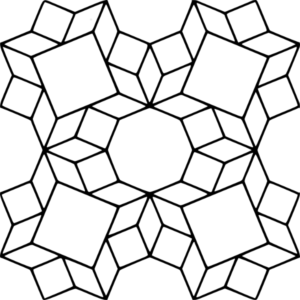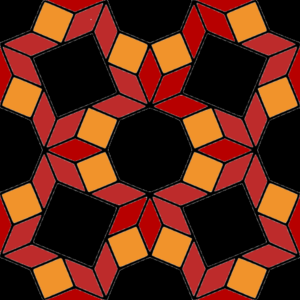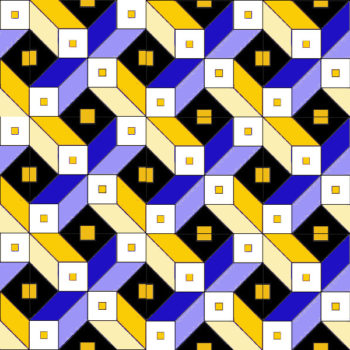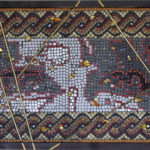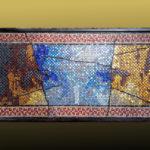An other gorgeously simple Roman mosaic pattern.
This is an other simple and elegant pattern. Its architecture allows for 3 colors to be used.
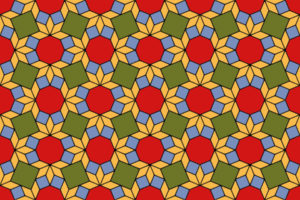
This pattern has been used in many places, among them Timgad, the ancient Colonia Marciana Ulpia Traiana Thamugadi founded by emperor Trajan around 100 AD.
It could be made of 3 different stones. Early stone tessellated mosaics would usually use a palette of 4 colors : Black, Red, White and Yellow.
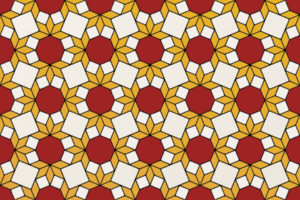
Wider surface can be generated with this pattern by horizontal and vertical translations of a basic element:
The architecture of this tile is more complex than the ones of Roman Tile – 01, Roman Tile – 02 or Roman TIle – 03 already published in this blog. Because its lines intersect at various angles it cannot be represented, like they are, in a matrix or spreadsheet, but only in a graphic manner.
This is an other variation using the traditional black, red and yellow stone colors, like the ones used on this floor mosaic in Bavay – the ancient Bagacum capital city of the Nervii in Northern Gaul.
I explained in my previous post Roman Tile-001 how you can create a graphic background based on such a pattern to use it in your mosaics or other graphic project.
With a little imagination you can create some amazing variations and use them for many different purposes.
Feel free to use this pattern for your own projects.
I believe in sharing. I myself use many excellent computer programs available for free. This is my little contribution to the community of people who believe we should not let big companies hijack online content. Such companies (Getty.edu, Alamy, 123RF, etc…) appropriate the work of independent creators or public domain images; sneakily prevent public access to the original images and then sell those images to whoever does not have time to look for their original free versions.


